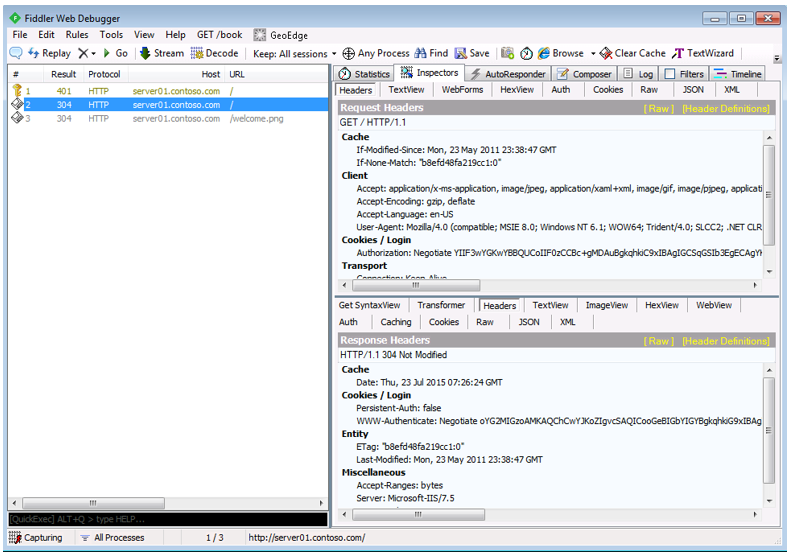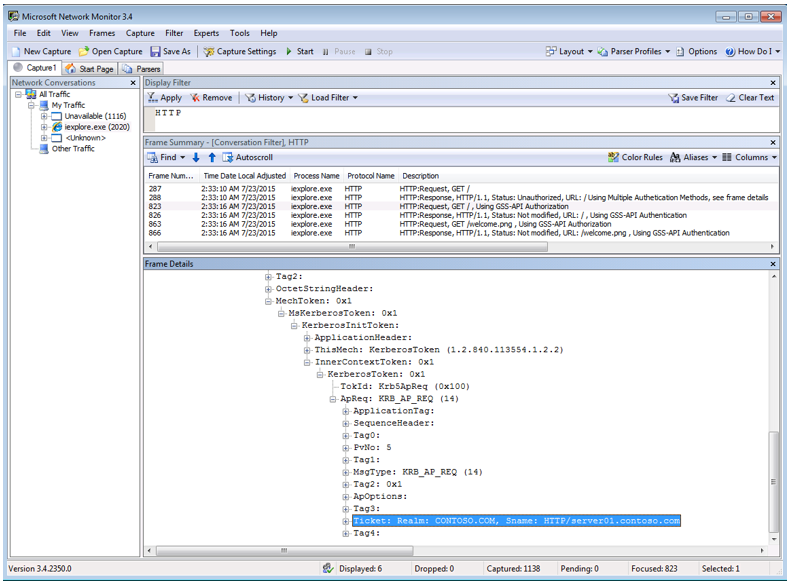Why am I getting this challenge response popup?
This article has been moved to its new home here: https://benperk.github.io/msdn/2015/2015-08-why-am-i-getting-this-challenge-response-popup.html
Real quick, the reason for the credential pop-up is because the URL you are accessing is not in the Local Intranet trusted sites lists, as shown in Figure 6a and 6b!
I setup a domain and did some learning on Kerberos.
The first lessons I learned working towards a better understanding of Kerberos was some NTLM internals. This is because after configuring IIS as shown in Figure 1, to use Negotiate, when I accessed the IIS server from a client, the client and server negotiated NTLM instead of Kerberos. So I had to find out why. What I am confident was happening was caused by the account I was using. I was using an Administrator account which had a match in the SAM database on the client. I learned some good NTLM information here.
Figure 1, configure Kerberos (negotiate) on IIS
In my lab I had my own CONTOSO domain and created a new account. When I used this account, I was able to see that Kerberos was being used. Once I got Kerberos to be used, I got the issue where I had to login once per browser session. I.e. I would access the server URL, get prompted for my credentials, enter them and then I had access to the web site. So Kerberos wasn’t failing, I was just getting that credential popup which was not desired. See the following figures:
- Figure 2 - initial request using the FQDM where I see the WWW-Authenticate headers for both Negotiate and NTLM, normal to get a 401.2 returned, see here.
- Figure 3 - the response to the 401.2 from the client was to send the Authorization: Negotiate cookie with the next request. I noticed the length of the cookie and can be confident that it is indeed Kerberos, NTLM would be shorter.
- Figure 4 - is a Network Monitor trace to additionally confirm Kerberos is used and looked at the SPN used for the Kerberos ticketing process
- Figure 5 - the challenge response pop-up I got when accessing the FQDM
Figure 2, client request using fully qualified domain name (FQDM)
Figure 3, client request send back Authorization: Negotiate cookie
Figure 4, Network Monitor trace showing the SPN for my Kerberos request
Figure 5, Kerberos challenge response pop-up, works after entering credentials
Once I added the FQDM to the client browser, as shown in Figure 6, I no longer had to enter the credentials for Kerberos authentication to work.
Figure 6a, add the FQDM to the Local Intranet site, IE 10








